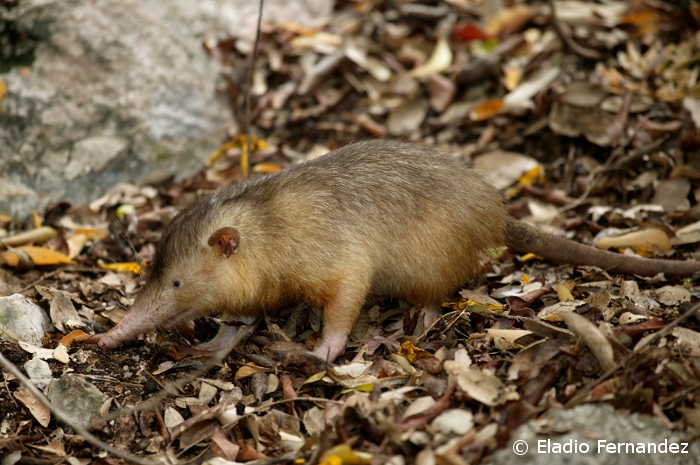
Solenodons diverged from all other living mammals during the Cretaceous Period, an incredible 76 million years ago. What is more, the only two species of solenodon alive today, the Cuban solendon and the Hispaniolan solenodon are believed to have diverged around 25 million years ago, that is two million years longer than when human ancestors diverged from Old World monkeys. We can almost look at solenodons as living fossils, however despite surviving for so many million years they weren’t quite ready for humans. Before humans arrived, there were about 25 land mammals on Hispaniola today there are only two species of land mammal living on the island: the solenodon and Cuvier’s Hutia (EDGE mammal #162), both are extremely unique and endangered.
Solenodons were some of the main predators in the island prior to humans; therefore they never evolved any ‘anti-predator’ defences. Resembling an overgrown shrew, this solenodon is a slow, clumsy mover; making it ill equipped to defend itself against introduced predators such as dogs, cats and mongooses. Habitat loss and the introduction of these predators are decimating this species.
EDGE Fellows are currently working with The Last Survivors initiative to secure a future for this extraordinary species.